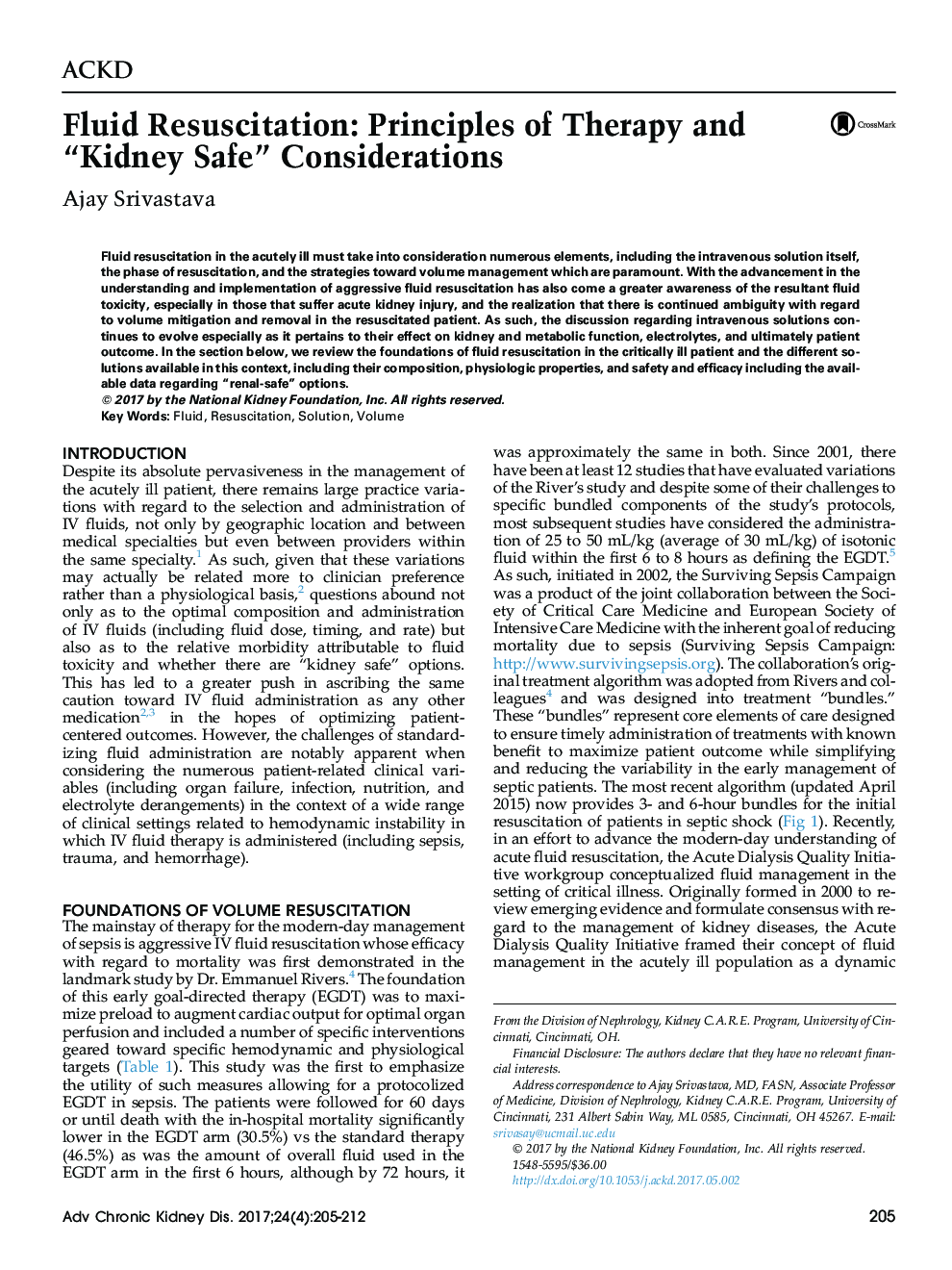| Article ID | Journal | Published Year | Pages | File Type |
|---|---|---|---|---|
| 5685149 | Advances in Chronic Kidney Disease | 2017 | 8 Pages |
Abstract
Fluid resuscitation in the acutely ill must take into consideration numerous elements, including the intravenous solution itself, the phase of resuscitation, and the strategies toward volume management which are paramount. With the advancement in the understanding and implementation of aggressive fluid resuscitation has also come a greater awareness of the resultant fluid toxicity, especially in those that suffer acute kidney injury, and the realization that there is continued ambiguity with regard to volume mitigation and removal in the resuscitated patient. As such, the discussion regarding intravenous solutions continues to evolve especially as it pertains to their effect on kidney and metabolic function, electrolytes, and ultimately patient outcome. In the section below, we review the foundations of fluid resuscitation in the critically ill patient and the different solutions available in this context, including their composition, physiologic properties, and safety and efficacy including the available data regarding “renal-safe” options.
Keywords
Related Topics
Health Sciences
Medicine and Dentistry
Nephrology
Authors
Ajay Srivastava,
